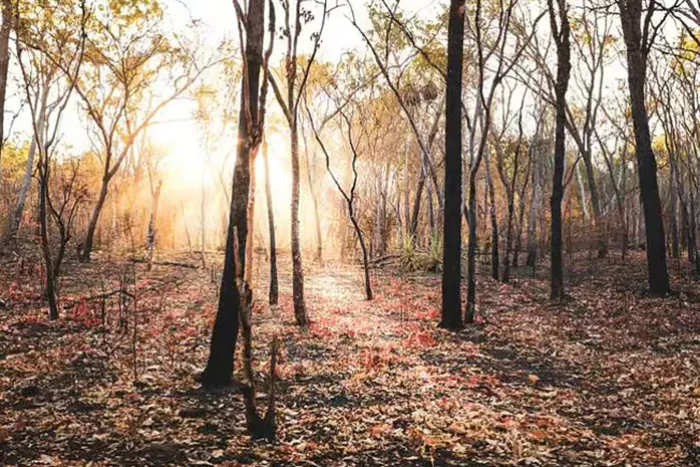A recent study has found that shrub cover across southeastern Australia dropped by 50% following the arrival of Indigenous populations. The research, published in Science, suggests that this change was linked to traditional cultural burning practices, which were used to reduce the risk of intense bushfires.
Shrubs, which form the middle layer of vegetation in forests, play a significant role in spreading fires. They can help ground fires escalate into severe crown fires that are difficult to control. Aboriginal cultural burning has long been known as an effective fire management technique and is still practiced in northern Australia today.
However, historical records in southeastern Australia—an area that saw heavy disruption following British colonisation—are less detailed. The study, led by researchers from the Australian National University, analyzed ancient pollen found in sediment cores to estimate plant coverage in the region over time.
Dr. Simon Connor, one of the co-authors of the study, explained that pollen grains, which settle in lakes and wetlands, can remain preserved for millions of years. These grains offer valuable insights into past vegetation, including what types of plants were present and how their populations changed.
The research team examined 2,833 records from sites stretching from eastern South Australia and southern Queensland down to the Victorian coast. Their findings revealed that before humans arrived, shrubs covered about 30% of the land. After Indigenous populations settled, this figure dropped to 15%.
Dr. Connor suggests that cultural burning was the most likely cause of this reduction. “We don’t see any clear climatic reasons for such a drastic change,” he said. “It seems likely that people were actively managing the land through burning, which helped reduce the shrub layer.”
Following British colonisation and the suppression of Indigenous fire practices, shrub cover increased to 35%, surpassing pre-human levels. The researchers noted that this shift aligns with both Indigenous oral histories and early European accounts of the landscape.
While it is harder to determine from the fossil record, the study also suggests that cultural burning may have helped prevent larger, more dangerous fires. Dr. Connor speculated that catastrophic megafires, which have become more common in recent decades, were likely less frequent before colonisation.
“The evidence we have suggests that massive fires weren’t as common in the past,” he said. “But reconstructing fire history is challenging, especially since a lot of the evidence, like ash from large fires, is often lost.”
With climate change exacerbating fire seasons and increasing the intensity of bushfires, the researchers argue that reintroducing cultural burning on a large scale could help manage fire risk. Many of the study’s authors are actively involved in modern Indigenous cultural burning efforts.
However, they caution that cultural burning practices must be adapted to modern challenges. “The vegetation has changed, and the climate has changed,” Dr. Connor explained. “The key question is how these practices can evolve to fit these new conditions. We need to carefully monitor the results of reintroducing these methods in today’s environment.”
Dr. Connor also raised concerns about the potential effects of restoring areas of forest that haven’t been subjected to cultural burning in over 200 years. “It’s possible to reintroduce these practices,” he said, “but we need to carefully test and monitor their impact on reducing the likelihood of catastrophic fires.”
Related topics:
- Buzz Around the Sound: ‘Daffodahlia’ Blooms with Excitement at Cattle and Cut Flowers
- Vibrant Woody Plants That Attract Butterflies and Moths
- Avoiding Orchid Care Mistakes That Can Kill Your Entire Plant


